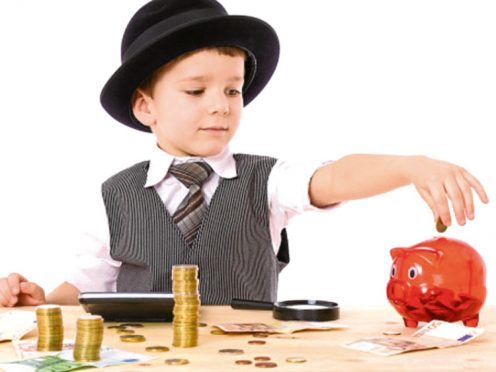I developed the “four pots” technique with the aim of teaching children about the value of money and the difference between short and long term savings, and to keep in perspective that money should be earned.
How much pocket money should be involved?
There is no right answer but a good rule of thumb is to pay the amount based on the age of the child, per week. This may be 50p, £1 or even £2. I prefer £1 per week per year of age. Starting at three and progressing until at least 14, this would equate to £156 a year at age three through to £728 at 14.
Now to the concept of the money being earned. At young ages, tasks like helping to set the table and putting shoes away neatly works well.
At older ages, this could be widened out to cleaning the car, polishing shoes or helping in the garden. By doing this the youngster and parent can begin to appreciate the value of the money. And so to the four pots.
Pot one – charity/good causes (10%).
At £1 a week per year of age, this equates to 30p for a three-year-old and £1.40 for a 14-year-old. By putting this to one side for a good cause children learn the joy of giving, and the value of money to people who either don’t have it or need it in particular circumstances.
Pot two (30%) – now.
This can be spent instantly or saved. As long as it is legal, it can be spent on anything – sweets, magazines or cheap plastic toys that last two minutes. The child will appreciate this independence and also learn about values.
Pot three – things to save for (30%)
For a three-year-old 90p and for a 14-year-old £4.20 per week, which must be put into a piggy bank, building society or bank account to fund a special purchase.
By saving towards a known spend date/amount, the child will again learn about value, but also patience and budgeting.
Pot four – long-term savings/investments
The idea here is to start talking about what might be needed in the future and have money “invested” in something that is also fun to watch.
At a young age and until funds reach at least £100, I suggest a decent building society account. Perhaps then National Savings Premium Bonds before stepping up to purchase £100 worth of Disney, Coca Cola or Samsung shares. These are examples, not recommendations, of course. Longer term saving is important but it should be fun.










